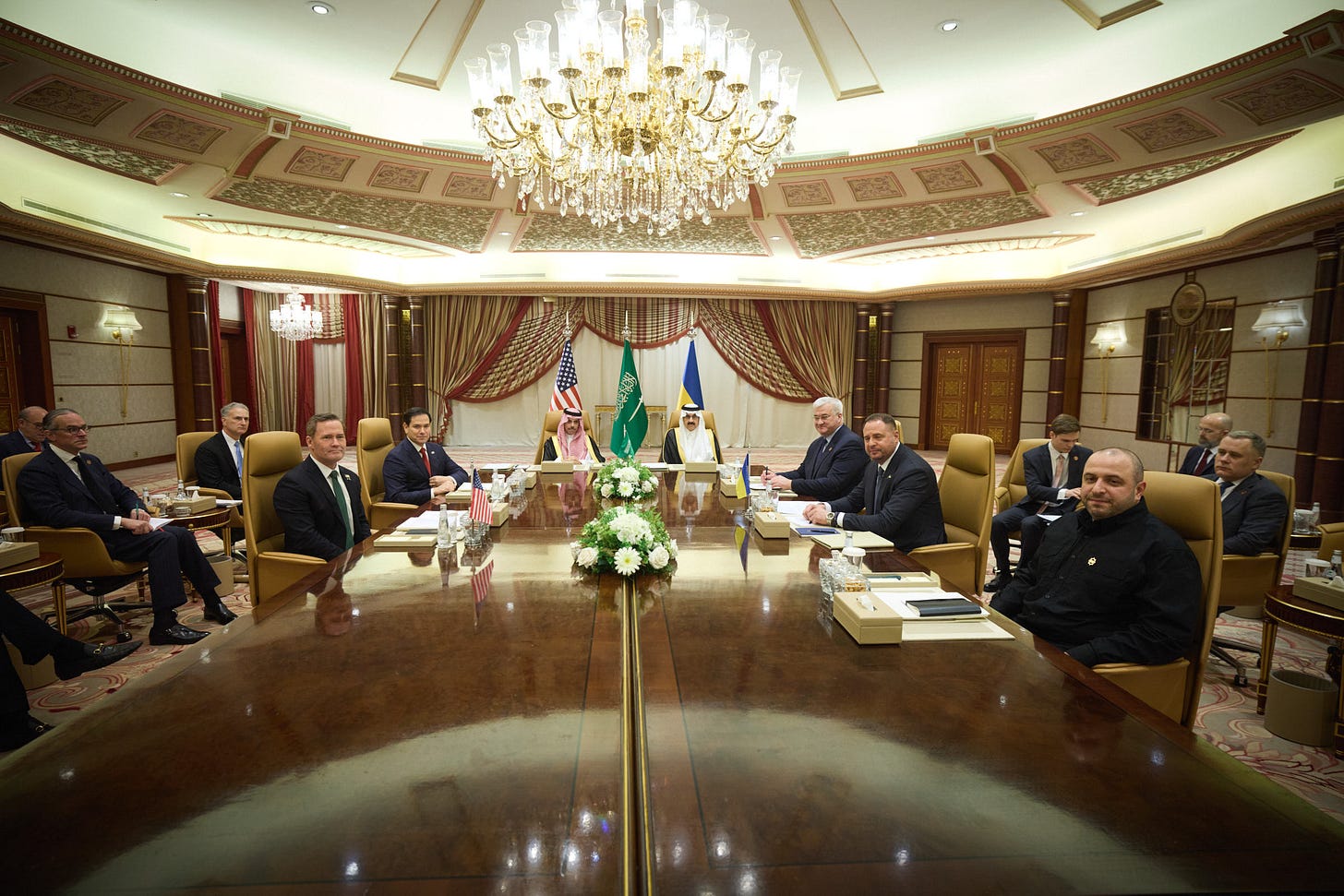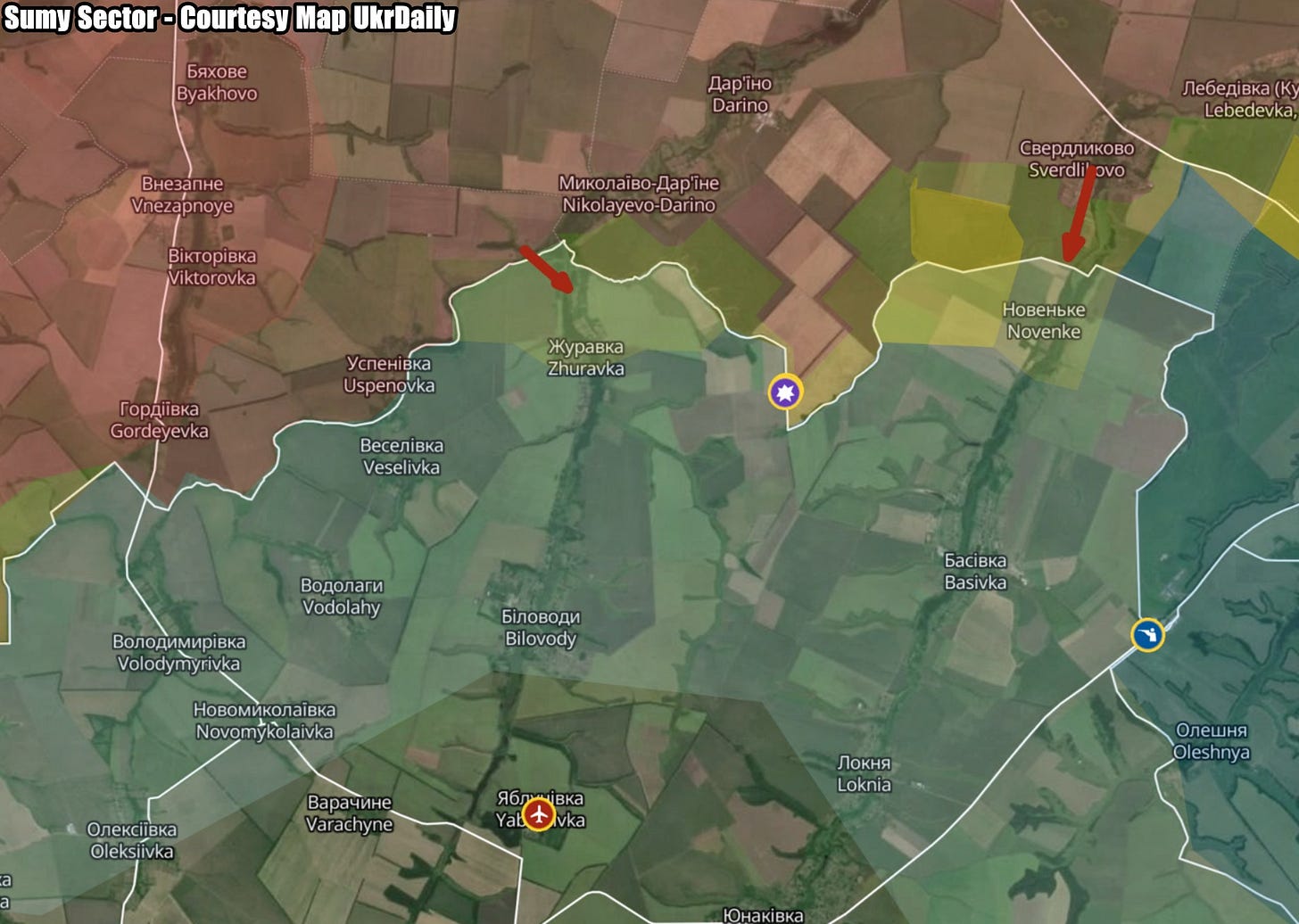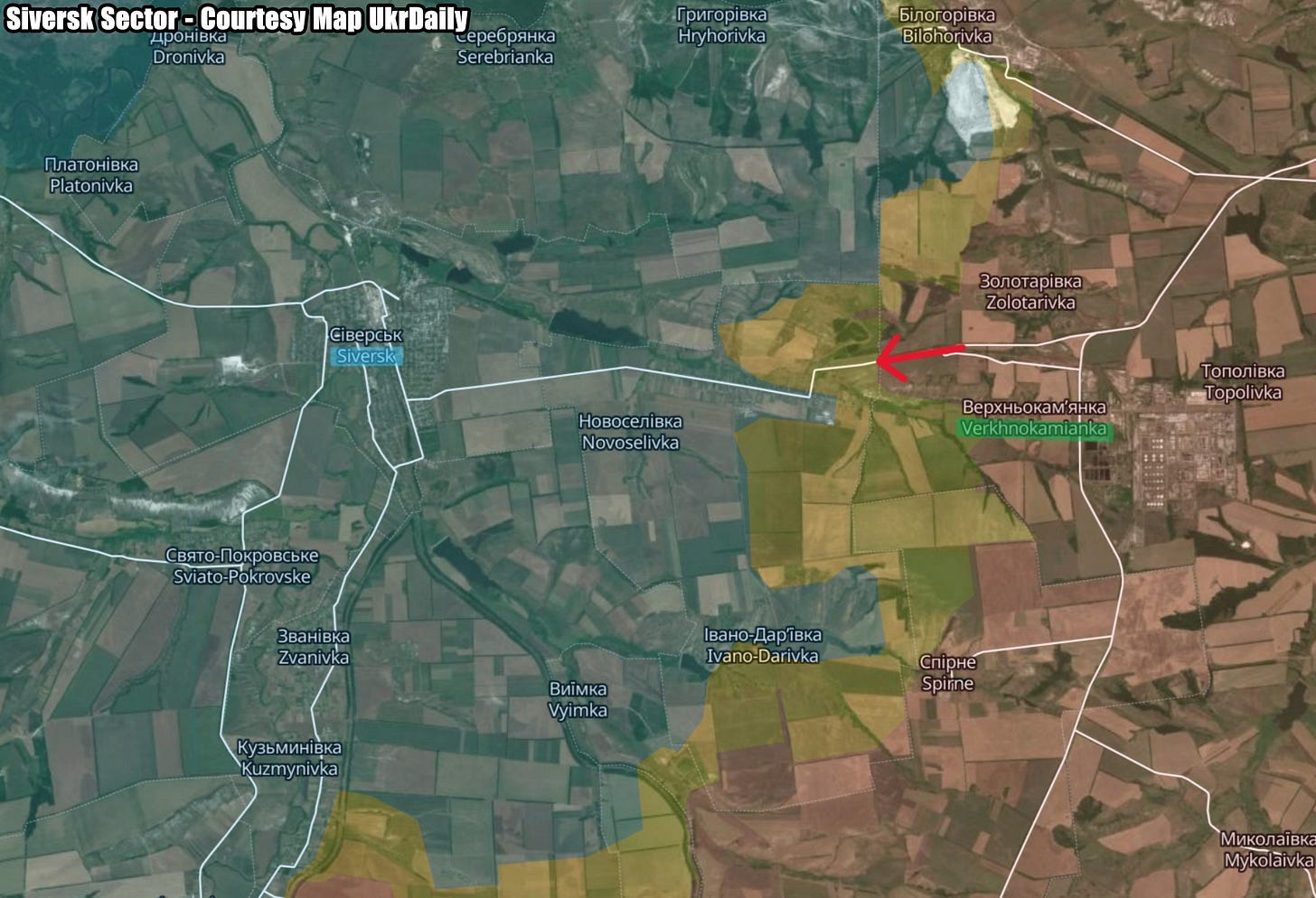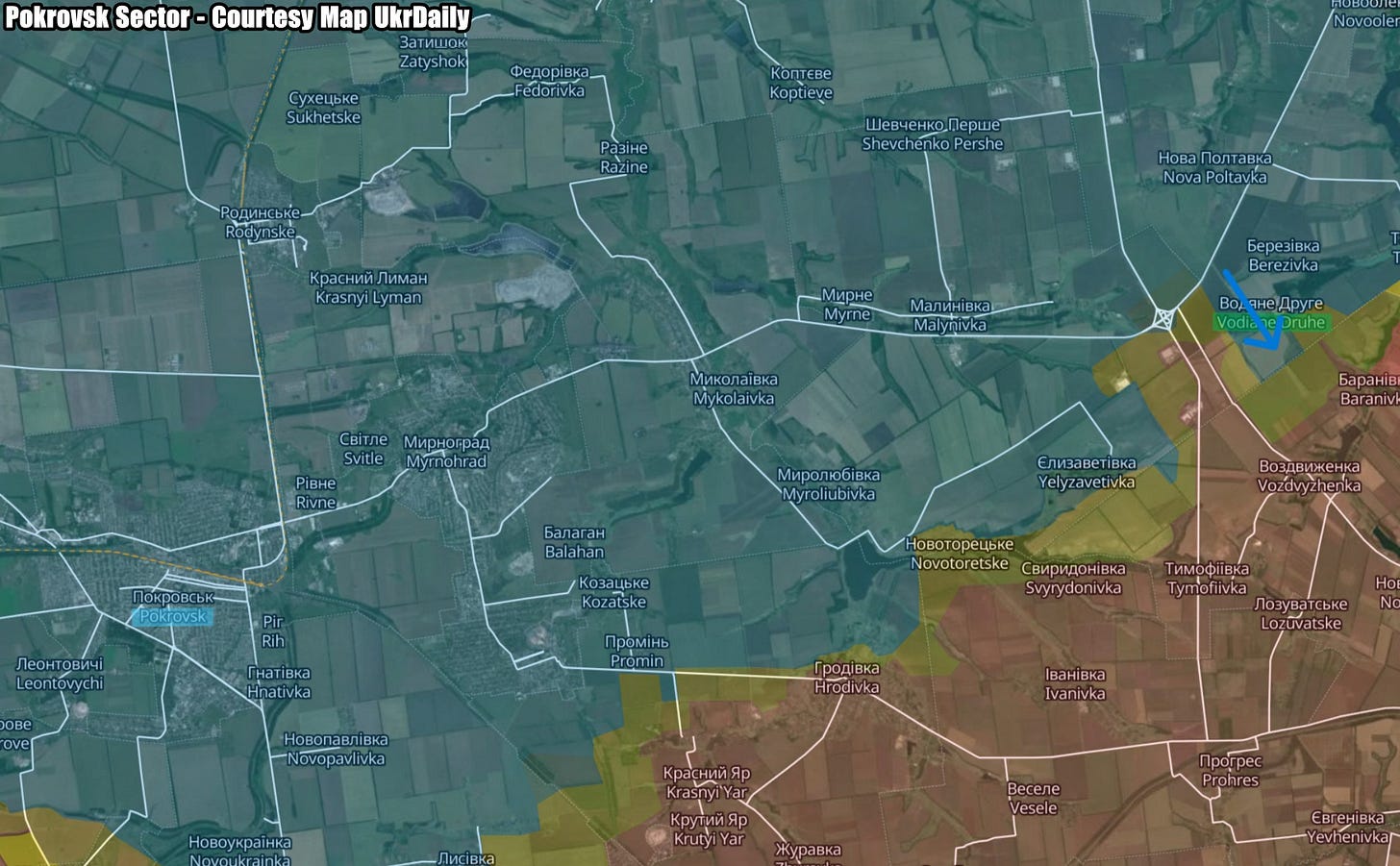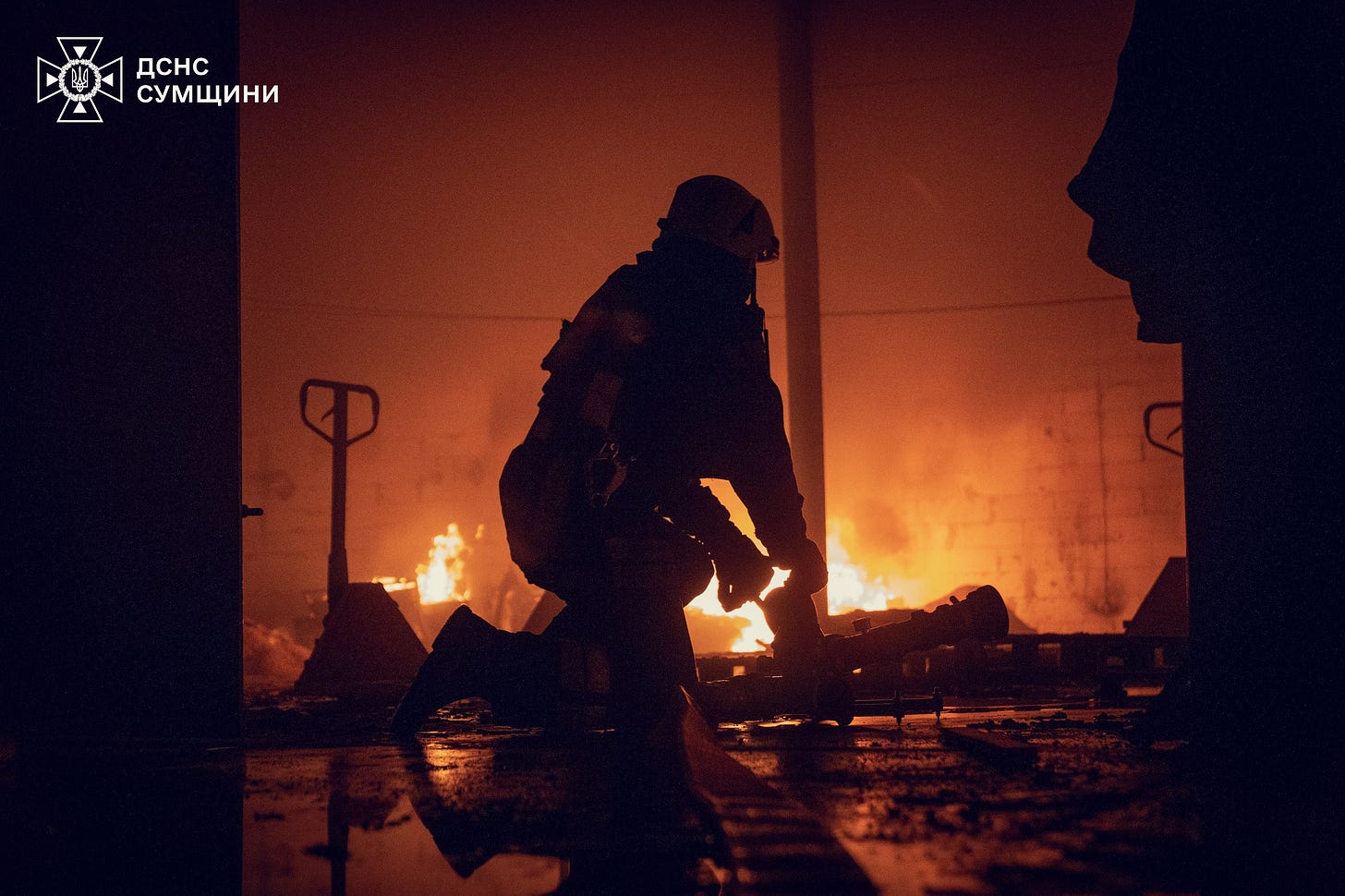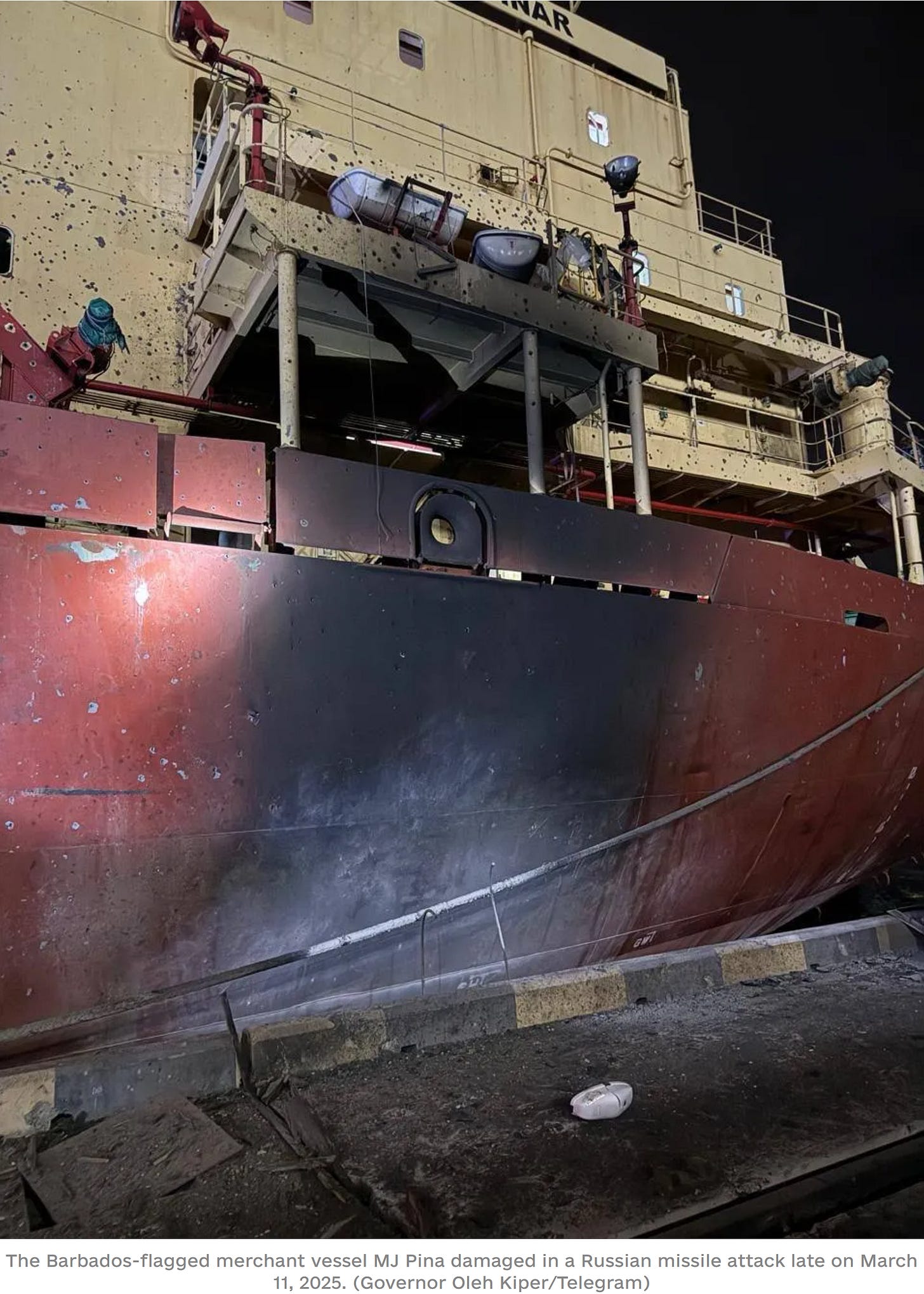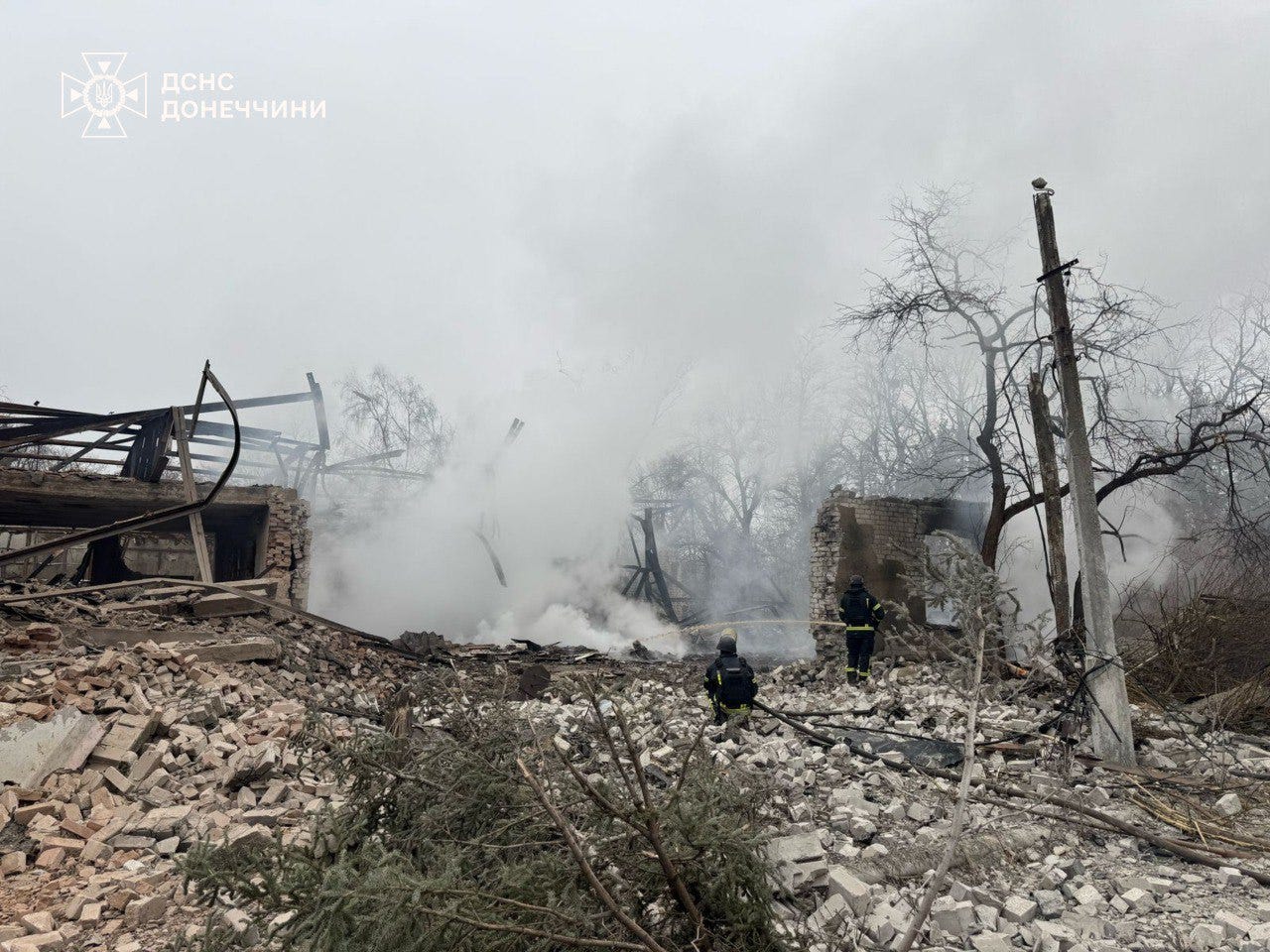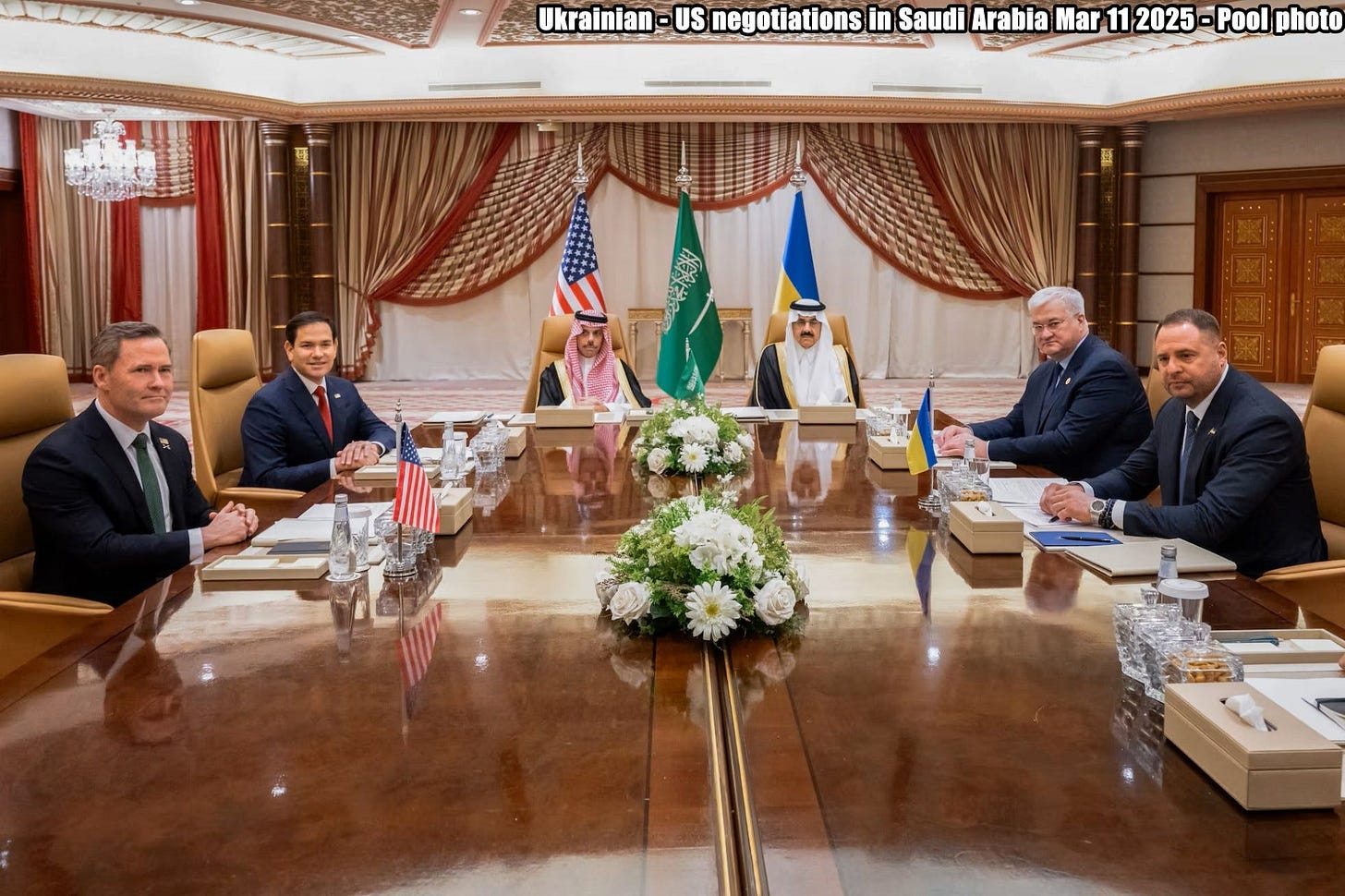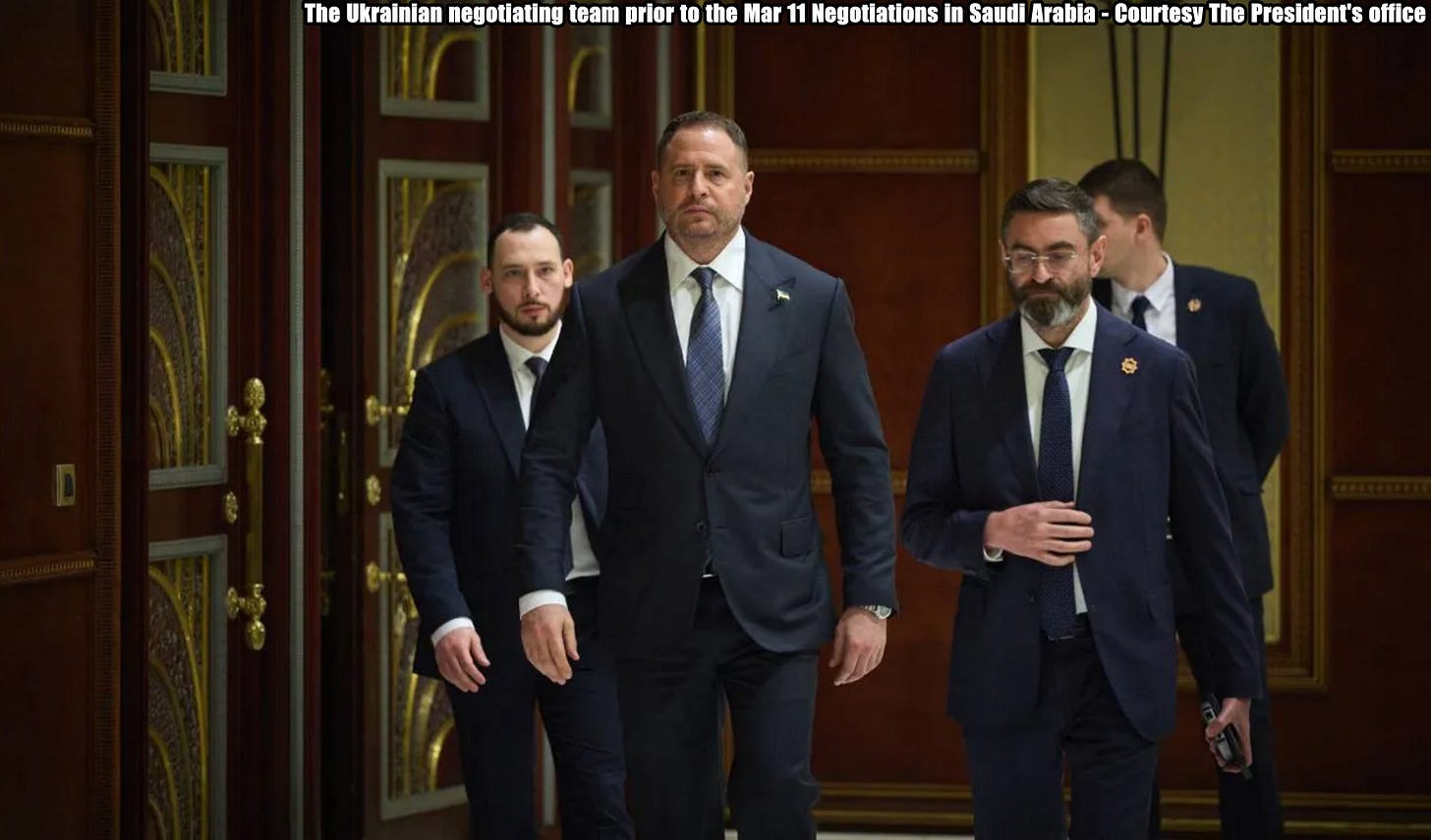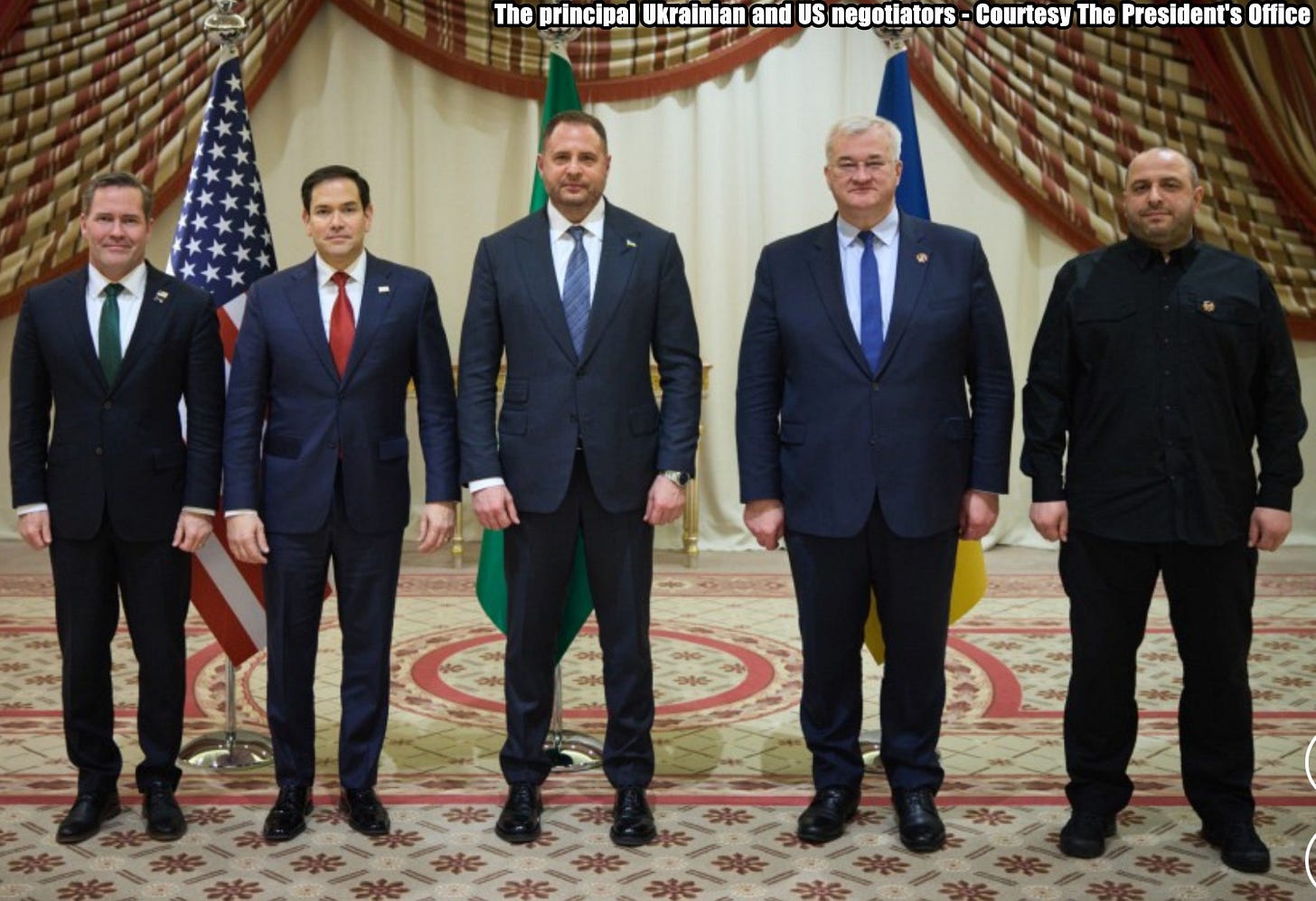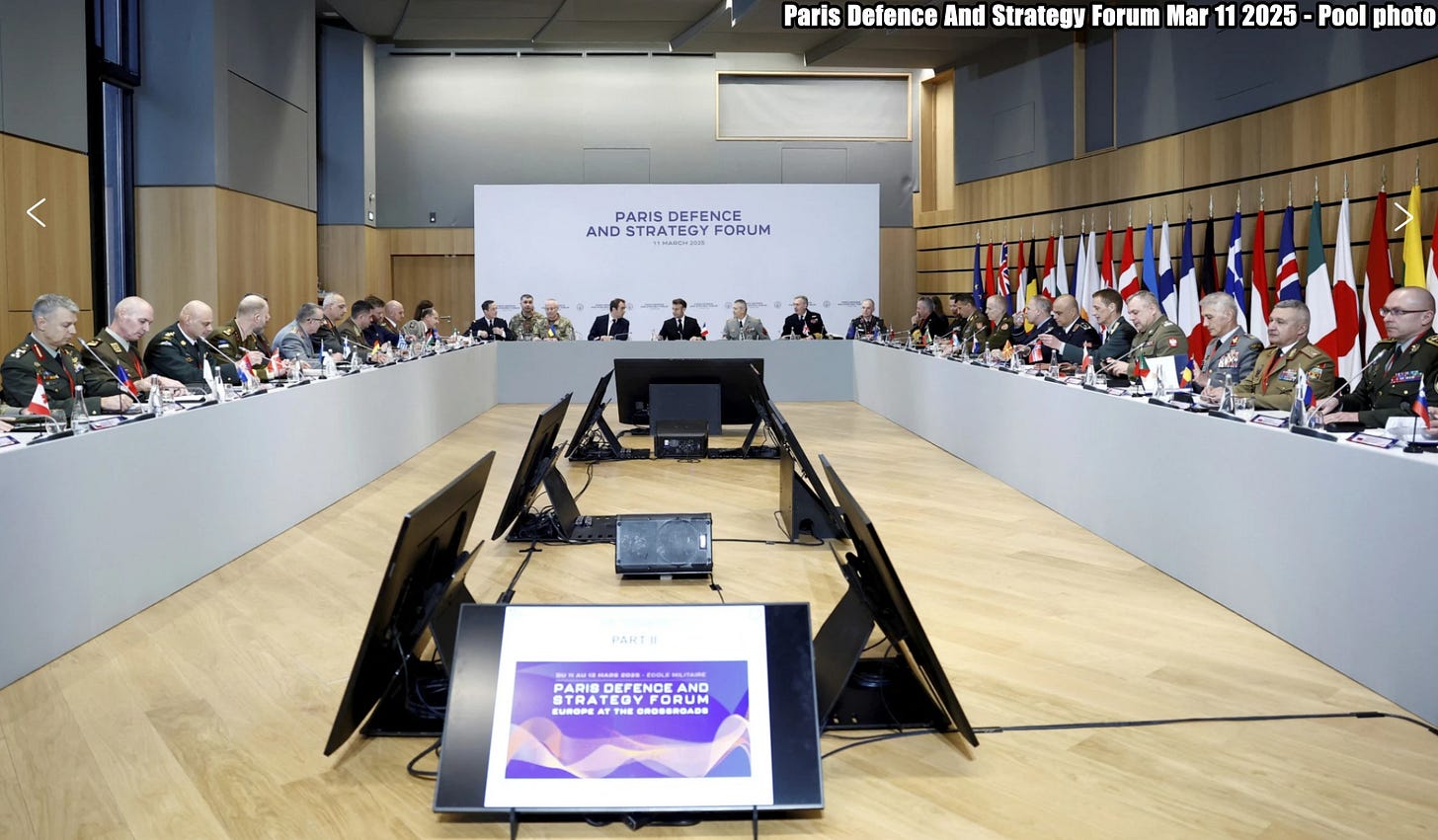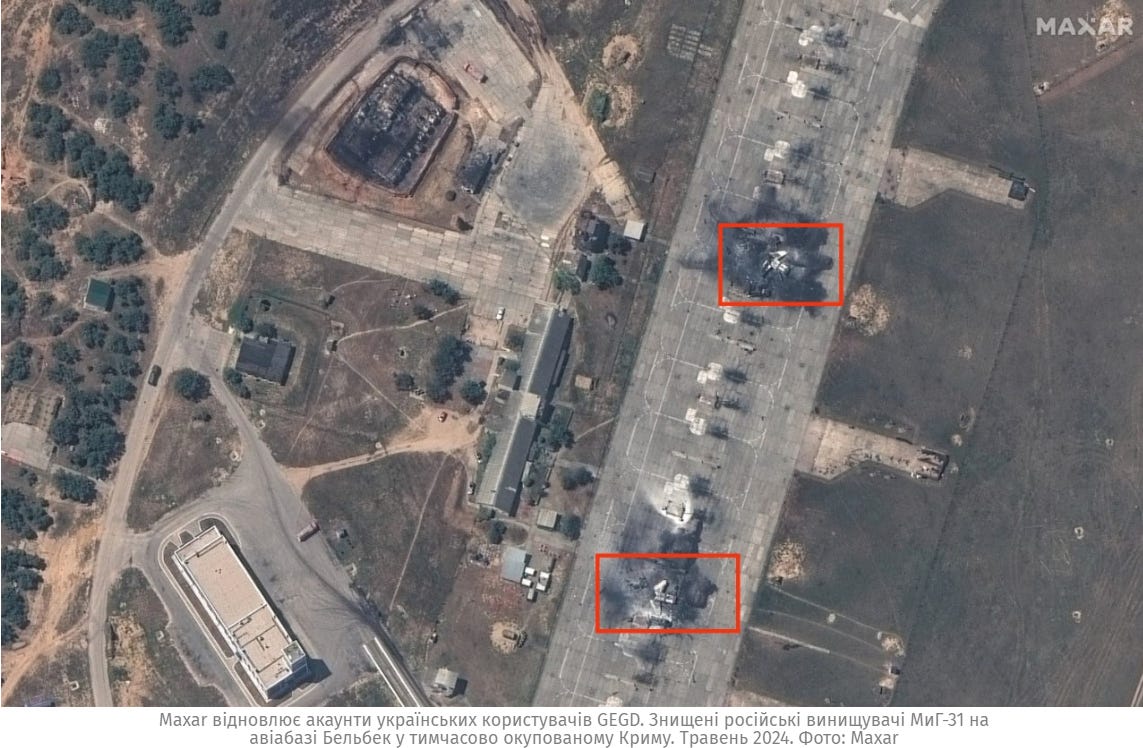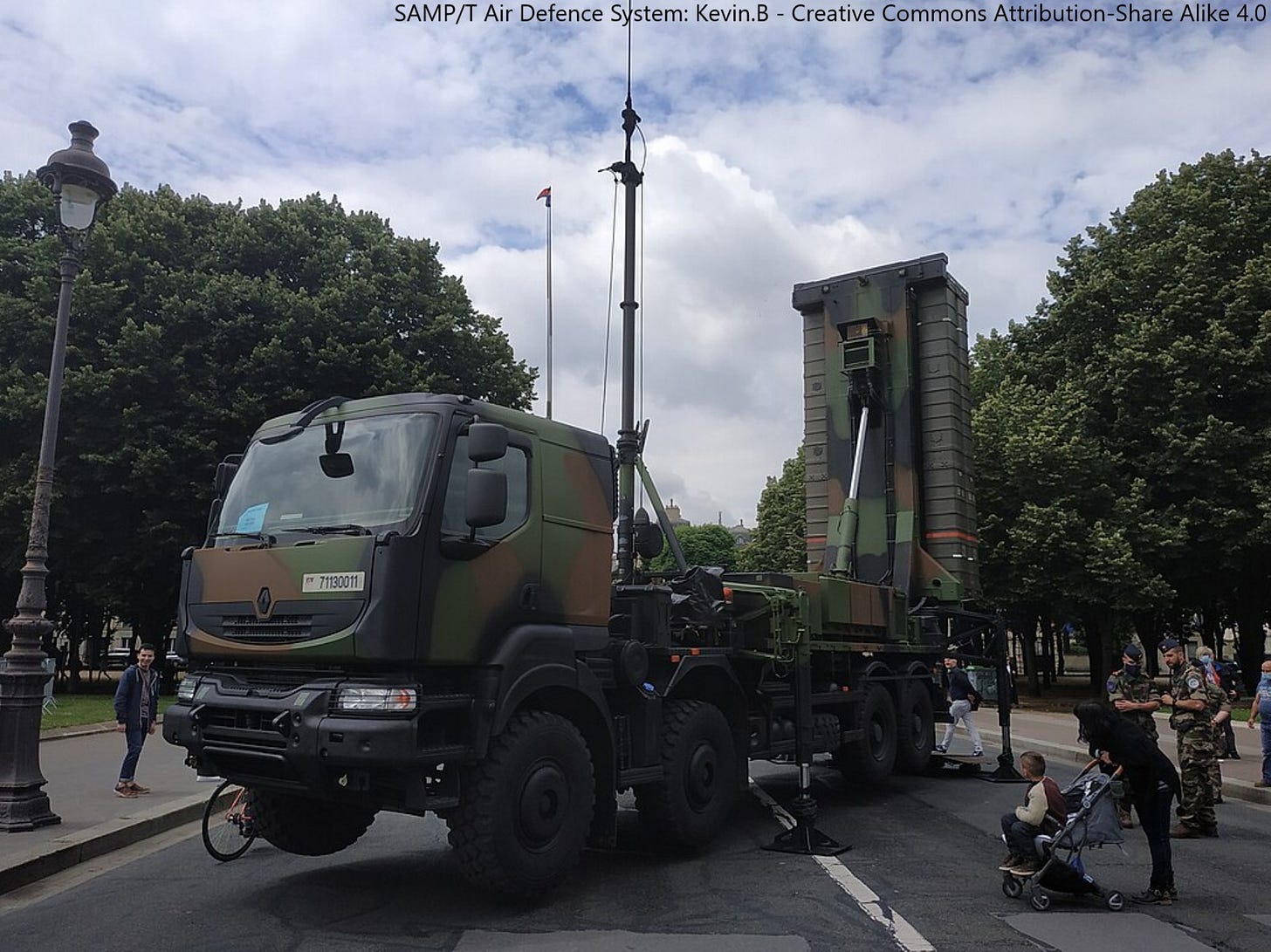Slava Ukraini! In early 2022 I began a Telegram channel aggregating news from a number of sources daily on the war in Ukraine. In June 2023 I began providing a daily draft for the Ukraine War Brief Podcast collecting news from over 70 sources daily, which formed the basis of the script. While the Podcast no longer exists I have continued to make this Brief available for my followers here on Substack for those who wish to keep up with the news from the war.
All the latest news on the Russo-Ukraine War 6 days per week
ALONG THE CONTACT LINE
GSAFU Morning Report
For: Mar 12 2025
The General Staff of the Armed Forces of Ukraine in its Operational Information update at 08:00 on Mar 12 stated that day of the full-scale invasion of the Russian Federation against Ukraine had begun.
The situation on the line of combat remains tense in some sectors. Ukrainian defenders continue to actively counteract the Russian aggressor, causing them significant losses in personnel, equipment and technology. Exhausting the enemy along the entire front line and continuing to disrupt the plans of Russian occupiers to advance deeper into the territory of Ukraine.
During the past day, 259 combat engagements took place.
Over the past 24 hours, the enemy carried out 2 missile strikes, 74 air strikes, used 2,285 drones and fired approximately 5,000 artillery shells across the positions of Ukrainian forces and civilians.
Air Force Daily Report
98 ENEMY UAVS SHOT DOWN, 20 SIMULATOR UAVS FAILED TO REACH THEIR TARGETS (LOCATIONALLY LOST)
➖➖➖➖➖➖➖➖➖
On the night of March 12, 2025 (from 19:00 on March 11), the enemy struck Odessa and Kryvyi Rih with three Iskander-M ballistic missiles from Crimea, and also attacked with 133 Shahed strike UAVs and simulator drones of various types from the directions: Orel, Shatalovo, Millerovo, Kursk, Bryansk, Primorsko-Akhtarsk - Russia, Chauda - Crimea.
The air attack was repelled by aviation, anti-aircraft missile troops, electronic warfare units, and mobile fire groups of the Air Force and Defense Forces of Ukraine.
According to preliminary data, as of 09:30, it was confirmed that 98 Shahed attack UAVs and drones of other types were shot down in Kharkiv, Poltava, Sumy, Chernihiv, Cherkasy, Kyiv, Zhytomyr, Khmelnytskyi, Vinnytsia, Ternopil, Rivne, Dnipropetrovsk, Zaporizhia, Odesa and Kherson regions.
20 enemy drone simulators — lost in location (without negative consequences).
The Odesa, Dnipropetrovsk, Kharkiv, Sumy, and Kyiv regions were affected by the Russian attack.
Combat Operations in the Kursk Sector, Russian Federation
The Institute for the Study of War (ISW), a US based think tank, in its Mar 11 Russian Offensive Campaign Assessment reported that Russian forces continue to make confirmed advances in Kursk Oblast and have likely begun attacking Sudzha.
Geolocated footage published on Mar 11 indicates that Russian forces recently seized Bondarevka (east of Sudzha), Zamostye, and Makhnovka (both southeast of Sudzha). Additional geolocated footage published on Mar 10 and 11 indicates that Russian forces recently advanced into central Zazulevka (north of Sudzha), in the southeastern outskirts of Kolmakov (southeast of Sudzha), and south of Kurilovka (south of Sudzha).
Russian Chief of the General Staff Army General Valery Gerasimov visited a command post in Kursk Oblast on Mar 11. Gerasimov heard reports from Kursk Grouping of Forces commander Colonel General Valery Solodchuk and other unspecified Russian commanders about Russian operations in the area.
The Khortytsia operational-strategic group
(Responsible for the northeastern part of Ukraine. )
Sumy Sector: Russian forces continue conducting raids along the Sumy-Kursk oblast international border. Geolocated footage published on Mar 10 indicates that Russian forces, reportedly a sabotage and reconnaissance group, recently advanced southwest of Tetkino (northwest of the main Ukrainian salient in Kursk Oblast).
The assistant head of a Ukrainian border guards detachment stated on Mar 11 that Russian sabotage and reconnaissance groups are conducting operations along the international border in Sumy and Chernihiv oblasts.
Ukrainian military officials stated that small Russian infantry groups are attempting to gain a foothold in unspecified areas in Sumy Oblast and that Russian forces recently intensified drone and artillery strikes against Sumy Oblast border areas.
Siversk Sector: Russian forces recently advanced in the Siversk direction.
Geolocated footage published on Mar 11 showing Russian forces conducting a roughly battalion-sized mechanized assault indicates that Russian forces recently advanced north of Verkhnokamyanske (east of Siversk).
Ukraine's Luhansk Group of Forces reported that Ukrainian forces destroyed 14 armored vehicles and one tank and damaged 16 armored vehicles and two tanks during the Russian attack.
Toretsk Sector: Ukrainian forces recently advanced in the Toretsk direction.
Assessed Ukrainian advances: Geolocated footage published on Mar 6 and 9 indicates that Ukrainian forces recently advanced east of Panteleymonivka (southwest of Toretsk) and to the Tsentralna Mine in central Toretsk.
The Tavria operational-strategic group
(Responsible for the central-eastern and southeastern part of Ukraine.)
Pokrovsk Sector : Ukrainian forces recently advanced in the Pokrovsk direction.
Assessed Ukrainian advances: Geolocated footage published on March 11 indicates that Ukrainian forces recently advanced west of Vodyane Druhe (northeast of Pokrovsk).
Zaporizhia Sector: Russian forces recently advanced in western Zaporizhia Oblast.
Geolocated footage published on Mar 11 showing a Russian servicemember raising a Russian flag in central Pyatykhatky (northwest of Robotyne) indicates that Russian forces recently advanced in the area.
Geolocated footage published on Mar 10 indicates that Russian forces recently advanced southeast of Kamyanske (northwest of Robotyne).
The Odesa operational-strategic group
(Responsible for Kherson, Qırım, (also known as Crimea) and the Black Sea.)
There have been no major changes to the combat environment since our last report.
TEMPORARILY OCCUPIED TERRITORIES
Nothing major to report.
THE HOME FRONT
14 killed, 33 injured in Russian attacks against Ukraine over past day.
Russian attacks across Ukraine killed at least 14 civilians and injured at least 33 over the past day, regional authorities reported on March 12. The casualties included children and Syrian crew members of a merchant vessel in Odesa, the Kyiv Independent reports.
Russia launched three Iskander-M ballistic missiles against Odesa and Kryvyi Rih, as well as 133 Shahed-type attack drones and decoy drones against Ukraine overnight, the Air Force reported.
At least one person was killed and 10 injured during Russian attacks against Dnipropetrovsk Oblast, Governor Serhii Lysak reported.
A series of explosions were reported in Kryvyi Rih after Russia launched a missile strike against the city early on March 12. A 47-year-old woman was killed, while nine other people were injured, Lysak said. Seven of them have been hospitalized, and three are in serious condition.
High-rise buildings, administrative buildings, buses, garages, cars, shops, and a school were damaged.
Russia also attacked the regional center, Dnipro, overnight, injuring a 42-year-old man, damaging 10 houses, a kindergarten, a school, and other buildings, and starting fires across the city.
Russian attacks against Donetsk Oblast killed seven people and injured 13 over the past day, according to Governor Vadym Filashkin.
This included three people killed and three injured in Siversk, two killed and two injured in Rivne, one killed and two injured in Rodynske, one killed and another injured in Pokrovsk, four injured in Kostiantynivka, and one injured in Molocharka, according to the statement.
In Kherson Oblast, two people were killed and seven injured, including two children, according to Oleksandr Prokudin, the regional governor. Three high-rise buildings, eight houses, a gas pipeline, utility buildings, and cars were damaged.
Overnight, Russia struck a port in Odesa with a ballistic missile, damaging infrastructure and the Barbados-flagged merchant vessel MJ Pina, which was loading wheat for export to Algeria, Governor Oleh Kiper said.
Four Syrian crew members, aged between 18 and 24, were killed, while another Syrian crew member and one Ukrainian port employee were injured. Another ship and grain warehouses were also damaged.
One civilian was injured during attacks against the Myropillia community in Sumy Oblast on March 11, the regional military administration reported.
RUSSIAN WORLD
Russians outraged by US ceasefire proposal.
The U.S. proposal for a 30-day ceasefire in Ukraine that Kyiv supported after talks in Saudi Arabia has sparked outrage among Russian pro-war bloggers and military correspondents, who called it “a trap” and an attempt to give Ukraine time to strengthen its military forces, the Moscow Times reports.
While the Kremlin said Wednesday it was waiting for Washington to inform it about the details of the proposed ceasefire in Ukraine, pro-war figures voiced their expectation that Russia would reject the deal as Moscow was advancing on the front lines.
“The first point: 30 days is an utterly insignificant period, needed by Ukraine, not Russia, to replenish losses and prepare new defense lines. The second point follows from the first. The Americans will resume military aid to Ukraine, which the Ukrainian Armed Forces will actively use during a ceasefire to strengthen and prepare for new attacks,” the pro-war Telegram channel Archangel of Special Forces said to its audience of more than 1.1 million subscribers.
“And the question: is this something we need against the backdrop of the collapsing Ukrainian front? We think not,” it added.
“Trump is rushing to end the war in Ukraine because his Deep State opponents have regrouped and launched a massive counterattack against him and [Elon] Musk. But he has no clear idea how to do it and is not yet ready to unilaterally withdraw from the war. This was the trap set by the Democrats,” said Russian ultra-nationalist philosopher Alexander Dugin.
“A ceasefire is not a serious option, especially when Ukraine is clearly starting to lose,” he added.
Boris Rozhin, a pro-war blogger on Telegram, suggested that during the ceasefire, Ukraine would fake a negotiation process to strengthen its army and wait for U.S. weapons deliveries.
"A classic trap… Then we’ll say we were deceived again," Rozhin said.
On Wednesday, the Russian Defense Ministry said it took back control of five villages previously occupied by Ukrainian troops in the Kursk region. Russian state media and pro-war bloggers also shared videos of Russian troops raising flags in the town of Sudzha, which had been under Kyiv’s control since last August.
“Shove your peace initiatives up your a**. Last year, you were given the conditions for a ceasefire. You responded with an invasion. We got the message,” said war correspondent Alexander Kots, referring to the reports that Ukraine and Russia had been in de-escalation talks before Kyiv launched its Kursk incursion.
“What will a ceasefire give Russia? Nothing. What will 30 days give the Ukrainians? Front line stabilization, especially near Pokrovsk [in the Donetsk region] and in the Kursk region,” wrote Alex Parker Returns, another Z-channel on Telegram.
The author of the Zhivov Z Telegram channel, Alexei Zhivov, also expressed hope that Russia would not agree to the proposed ceasefire.
"Washington is resuming military support for the Ukrainian Armed Forces, openly reaffirming its involvement in the war against Russia,” Zhivov said.
“Why Russia would need this pause remains unclear. I hope we do not agree to it."
RELATED INTERNATIONAL NEWS
Ukraine agrees to 30-day ceasefire IF Russia abides by it, Kyiv says.
Kyiv is ready to accept Washington's proposal to immediately implement a temporary, 30-day ceasefire, which can be extended by mutual agreement, the Presidential Office announced on March 11 after the talks with the U.S. in Saudi Arabia. the Kyiv Independent reports.
Ukraine is ready to take such a step only if Russia adheres to the terms of the ceasefire in the same way, the Kyiv Independent reports.
The announcement comes as one of the main conclusions of the U.S.-Ukraine talks in Jeddah, in which the two sides sought a common path toward a peace deal after weeks of tense relations.
The ties between Kyiv and Washington grew sour after a heated exchange between President Volodymyr Zelenskyy and U.S. President Donald Trump in the White House on Feb. 28, which led to the U.S. halting military and intelligence support.
"Ukrainian proposal for this meeting with the Americans was three things: ceasefire in the sky — missiles, bombs, long-range drones — and ceasefire at sea, as well as measures to establish trust to this process, first of all – the release of prisoners," Zelenskyy said following the meeting.
"The American side understands our arguments, accepts our proposals, I want to thank President (Donald) Trump for the constructiveness of our teams' conversation," he added.
The president added that as part of the deal, the U.S. agreed to resume intelligence sharing and defense assistance for Ukraine.
"And today, there was a proposal from the American side to take the first step right away and attempt to establish a complete ceasefire for 30 days, not only regarding missiles, drones, and bombs, not only in the Black Sea but also along the entire front line," Zelenskyy said.
"Ukraine accepts this proposal." Zelenskyy added that the U.S. "must convince Russia" to abide by it.
During the talks, the Ukrainian delegation proposed to implement a partial truce in the sky and at sea, while the U.S. side wanted "to try to do more," a source close to the Presidential Office told the Kyiv Independent.
Russia's stance toward a partial ceasefire is unclear, the source added. Moscow has repeatedly rejected freezing hostilities along the current front line, believing it has the upper hand on the battlefield.
"Within a certain period of time, we will prepare a final agreement on how to end the war. Now, the discussions concern only the first steps," the source said.
Ways to enforce a possible ceasefire also remain uncertain. Kyiv has previously emphasized that firm security guarantees from the U.S. and other partners should be a key part of any cessation of hostilities, arguing that Russia has repeatedly violated multiple ceasefires since the start of its aggression in 2014.
The Trump administration has been reluctant to provide security guarantees to Kyiv and instead urged Europe to take responsibility for Ukraine's post-war stability. According to U.S. officials, the proposed minerals deal agreement could function as a security guarantee itself.
The readout from the Jeddah meeting said that both Zelenskyy and Trump "agreed to conclude as soon as possible a comprehensive agreement for developing Ukraine’s critical mineral resources to expand Ukraine’s economy, offset the cost of American assistance, and guarantee Ukraine’s long-term prosperity and security."
The Ukrainian delegation included President's Office Head Andriy Yermak, Foreign Minister Andrii Sybiha, Defense Minister Rustem Umerov, and Yermak's deputy, Pavlo Palisa. The U.S. delegation was led by Secretary of State Marco Rubio and National Security Advisor Mike Waltz.
In the coming days, Trump's envoy for the Middle East, Steve Witkoff, is also expected to travel to Moscow to meet with Russian President Vladimir Putin. Witkoff previously traveled to Moscow in February for the release of U.S. teacher Marc Fogel from a Russian prison and has emerged as a key figure in Washington's effort to negotiate a peace between Russia and Ukraine.
US to 'immediately' resume security assistance, intelligence sharing to Ukraine.
The United States will immediately lift the pause on intelligence sharing and resume security assistance to Ukraine, Ukraine's Presidential Office announced on Mar 11. The Kyiv Independent reports.
The statement follows talks between Ukraine and the U.S. in Jeddah, Saudi Arabia.
The U.S. has suspended military aid and intelligence to Ukraine after a meeting between President Volodymyr Zelensky, U.S. President Donald Trump, and U.S. Vice President JD Vance in the White House that ended in a heated argument.
The freeze on military aid has drawn criticism even from members of Trump's own party. Republican Senator Lindsey Graham said that pulling aid from Ukraine in the midst of Russia's war would "be worse than Afghanistan."
U.S. National Security Advisor Mike Waltz confirmed during a joint press conference in Jeddah that Washington will continue to provide military assistance to Ukraine under the so-called Presidential Drawdown Authority (PDA) program.
The delegations also discussed the essential role of humanitarian efforts in achieving peace, including the exchange of prisoners of war, the release of detained civilians and the return of forcibly displaced Ukrainian children.
The delegates will determine the composition of their negotiating teams to begin further negotiations to achieve a sustainable peace that will ensure Ukraine's long-term security, the Presidential Office's statement read.
France, UK push for significant Ukraine deployment to deter Russia.
Top military officials from across Europe and beyond joined talks in Paris on Tuesday on the possible contours of an international security force for Ukraine — an idea that France and Britain are pushing to deter any future Russian aggression on its neighbor if Moscow and Kyiv agree to stop fighting. AP reported on Mar 11.
Participants said they expected the closed-door discussions to be big-picture and broad-brush, providing a gauge of which nations might be ready to join a coalition for Ukraine but not, at this stage, committing them to providing specific numbers of troops, equipment or other assistance.
The French and British led effort to reassure Ukraine and help protect it from any renewed Russian aggression if it agrees to a ceasefire, comes as Kyiv is under intense pressure from U.S. President Donald Trump to engage in peace talks. Senior officials from Ukraine and the United States opened separate talks in the Saudi city of Jeddah on Tuesday focused on halting the full-scale invasion that Russia launched in 2022.
French President Emmanuel Macron attended part of the Paris meeting of army chiefs of 34 countries and other military representatives, including some who were scheduled to dial-in remotely from Japan, South Korea, Australia and New Zealand.
MILITARY & TECH
Maxar reportedly restores Ukraine's access to high-resolution satellite imagery.
U.S. aerospace company Maxar Technologies has restored Ukraine's access to the Global Enhanced GEOINT Delivery (GEGD) service, allowing Kyiv to utilize high-resolution commercial satellite imagery again, Ukrainian media outlet Militarnyi reported on March 12, citing users of the service.
Ukraine has relied on such imagery for defense and strategic planning, including tracking Russian troop movements, assessing battlefield conditions, and monitoring damage to Russian infrastructure.
According to Militarnyi's sources, the program's resumption means Ukraine can again access critical satellite intelligence for defense operations.
The move follows U.S.-Ukraine talks in Jeddah on March 11, where Washington agreed to restart key military and intelligence support for Ukraine. On March 7, Militarnyi reported that Maxar had restricted Ukraine's access to its satellite imagery, citing unnamed users.
The company later confirmed the suspension in a statement to the Kyiv Independent, explaining that the restrictions applied specifically to imagery provided through U.S. government programs.
CIA Director John Ratcliffe said on March 5 that the U.S. had halted intelligence sharing with Ukraine in a step seen as pressure tactics to push Kyiv toward peace negotiations with Russia.
WSJ: SAMP/T Struggles Against Ballistic Threats.
Defense Express looks into recent reporting from the Wall Street Journal that European SAMP/T air defense systems have been ineffective in Ukraine, citing both a missile shortage and poor performance against ballistic threats.
Before we write off the European anti-missile system as ineffective, let's remember there are several types of effectors it uses, and not all of them are supposed to take on ballistic targets, Defense Express reports.
Defense Express has already addressed the missile supply issue by analyzing the global stocks of Aster missiles and their production rates. The second concern is more complicated, so we'll discuss it separately.
As claimed by "people familiar with the matter," SAMP/T’s struggle with ballistic intercepts stems from software issues. This immediately draws historic parallels with the well-documented failure of Patriot systems during the 1991 Gulf War, where the American system missed intercepts of Iraqi Scud missiles.
However, it is unlikely that SAMP/T faces the same exact problem, since the Patriot case became a widely known illustrative example of how a bug in the code can cost the lives of military personnel.
But let us note that it wasn't the only factor. Patriot's GEM-T missiles did not guarantee the destruction of a ballistic missile’s warhead midair. This flaw led to the development of CRI and MSE interceptors with the brand-new "hit-to-kill" technology.
For SAMP/T, ballistic defense is officially attributed only to Aster 30 Block 1 and Block 1NT missiles.
The Block 1 upgrade, introduced in the early 2000s, improved homing software and control systems, successfully intercepting ballistic targets in tests by 2010.
Meanwhile, the deployment of SAMP/T had already started in France since 2007 and later in Italy. These were still equipped with the older variant now known as the Aster 30 Block 0. Also, even after Block 1 was fully developed in 2015, it took time to adopt the effector and launch its mass production.
Moreover, immediately after finishing Block 1, the partner countries started the Aster 30 Block 1NT program. This upgrade, forming the core of the upcoming SAMP/T NG system scheduled for production in 2026, was prompted precisely by the need for improved anti-ballistic performance. That is, the very fact it needed an upgrade from get-go hints that Block 1 was not doing well.
France’s Ministry of Defense claims that SAMP/T NG will even be able to counter Kh-47 Kinzhal, the russian self-proclaimed "hypersonic" ballistic missile. The catch is, American Patriot has already repeatedly demonstrated this capability in Ukraine, so it only underscores SAMP/T’s current limitations.
The main improvement in Block 1NT over Block 1 is a new radar seeker operating in the Ka-band (26.5–40 GHz), which offers greater targeting precision than the Ku-band (10.7–12.75 GHz) seeker used in earlier versions.
Notably, French and British naval forces have successfully used Aster 30 missiles to intercept ballistic threats while protecting commercial shipping in the Red Sea. However, details on missile expenditure and overall system effectiveness remain undisclosed. Moreover, ship-based air defense systems may differ significantly from ground-based counterparts, especially their fire control systems.
To summarize, in assessing SAMP/T’s real ability to intercept ballistic missiles, the key question is not whether it can engage them at all, but how successful and efficient a specific effector variant is against a specific type of threat it is trying to deflect.
That’s it for today’s Brief folks if you would like to keep up with events in Ukraine daily please consider subscribing, it’s free!





